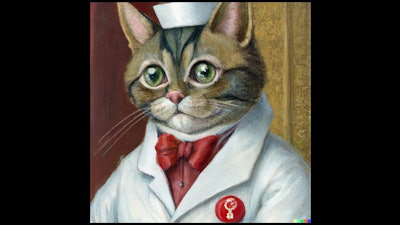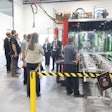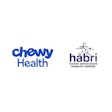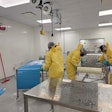
Adapted from a press release:
A computer simulation of domestic cats’ noses suggests that the convoluted nasal structures involved in their sense of smell function similarly to parallel coiled gas chromatographs—laboratory equipment used for highly efficient analysis of the chemical makeup of substances. Researchers from Ohio State University found that the convoluted nasal structures involved in odor detection within cats’ noses function similarly to parallel coiled gas chromatographs, laboratory equipment used for analysis of volatile chemical substances. The research expands pet food makers knowledge about cats’ perception of their food and other stimuli.
I want my free, daily news update from Petfood Industry.
Vertebrates use their noses for both breathing and smelling, with receptors inside the nose detecting odors in inhaled air. Some prior studies suggest that odor detection in vertebrates may function similarly to basic gas chromatography, in which, essentially, the substance being analyzed is vaporized and carried by a steady flow of gas through a tube. Different chemical components of the substance interact with the tube in distinct ways along its length, enabling identification of each component.
Parallels between gas chromatography and nose function have already been observed in amphibians. However, few studies have examined these parallels for mammalian noses, which have more convoluted channels through which air passes to enable odor detection.
To shed new light, Wu and colleagues developed an anatomically accurate three-dimensional computational model of the nose of a domestic cat. They drew on a variety of techniques, including high-resolution micro-CT scans of an actual cat’s nose and computational fluid dynamics modeling.
Simulation of air and odor flow through the virtual cat nose showed that it appears to function similarly to a parallel coiled gas chromatograph, in which the efficiency of the basic technique is boosted by the use of multiple tubes branching off of one high-speed gas stream.
In other words, if a cat’s nose only had one straight tube for odor detection, it would need to be longer than the physical size of the head allows in order for odor detection to be as efficient as it actually appears to be. Having multiple complex channels appears to be 100 times more efficient than having a single straight tube.
Pet food sensory analysis provides competitive advantages
Pet food sensory analysis can give clues about which products will please both pets and their owners, said Kadri Koppel, PhD, assistant professor at Kansas State University, during her keynote address at the Petfood Innovation Workshop held in Kansas City, Missouri, USA on April 3, 2017.
“Consider sensory testing as one of the ways to figure out what pets and owners really like,” she told Petfood Industry. “I think that will help you along in your market success and your product success.”
How sensory analysis can help pet food companies
Pet food characteristics, pets’ reactions and owners’ observations make up a triangle of influences on whether a pet food succeeds in the market, she said. Smell, texture, taste and other sensations can determine if dogs and cats accept or reject a pet food. Similarly, the sensory characteristics of the pet food and its packaging influence pet owners’ perception of the food.
Beyond observing their pets’ responses to food, pet owners note physical characteristics of the pet food and its packaging that can have important repercussions, she said.
“Don’t change color of package,” advised Koppel. “Customers think, ‘I know I buy the yellow bag’ even if they don’t recall the exact variety.”
Once the package is open, some characteristics that pets may love can disgust their owners. For example, while dogs may be attracted to pungent odors, owners may be unwilling to tolerate that stink in their homes, she said.
Options for pet food sensory analysis
Larger pet food companies may have their own sensory laboratories, while other businesses work with independent labs. However, not all pet food companies have access to sensory analysis laboratories to determine the characteristics of their products. Those pet food companies can learn from published research and conduct their own in-house sensory analysis, Koppel told Petfood Industry.
For example, Koppel’s paper “An initial lexicon for sensory properties of dry dog food,” published in the Journal of Sensory Studies, defined sensory characteristics of pet food, such as barnyard, brothy, brown, grain, soy, vitamin, off-flavors, oxidized oil, cardboard and stale. Those standardized descriptive terms give pet food companies a common vocabulary to understand their products and their competitors'. The American Society for Testing and Materials also provides objective definitions for sensory characteristics.
“A major difficulty in sensory analysis of pet food is that testers need to be trained to be objective,” Koppel said. “It isn’t about human preferences. Panelists need to be trained to describe the characteristics of the pet food, not their subjective reaction to it.”
Once those characteristics have been determined, the results can help pet food companies understand what attributes influence pet preferences for one food or another when tests are conducted with animals.
Techniques for pet food sensory analysis
The most common pet food sensory analysis is done using a two-bowl test. Researchers present two products side by side and record animals’ preference for one over the other.
“Think about the objectives of the test first, then select the proper sensory testing methods to go about solving your sensory testing issues,” she said.
Currently, scientists are developing new methods to make testing more efficient and precise, said Koppel. In the competitive pet food market, the advancing science of sensory analysis can give brands an advantage.
Sensor technology may help pet food palatability testing
Electronic sensors, called e-tongues and e-noses, could aid in pet food palatability assessments, new product development, quality control and other dog and cat food production processes, Federica Cheli, PhD, professor of animal science at the University of Milan told Petfood Industry in 2017.
“This could reduce costs for smaller pet food companies,” she said.
Research on e-tongues and e-noses with pet food
However, scientists still need to establish certain parameters to calibrate the electronic sensors to dogs’ and cats’ preferences, she noted.
“Before using of e-nose or e-tongue analysis for pet food palatability evaluation, the correlation to animal response to a product must be evaluated, and palatability tests must be associated with e-nose evaluation of the products,” she said. “Thereby, we can obtain standard odor and aroma profiles [fingerprints] associated with high palatability to develop highly palatable pet food, maybe for different pets: cats versus dogs, puppies, senior pet, dietetic pet food, et cetera.”
Cheli and her colleagues at the University of Milan analyzed the potential for e-noses and e-tongues as sensory analysis tools for the pet food industry. They published their conclusions in the journal Sensors and Transducers.
Potential for e-noses and e-tongues in pet food platability
“In literature, the applications of the e-nose and e-tongue in pet food analysis are very scarce,” said Cheli.
Once the basic research is done, the e-sensory approach could have numerous applications in the pet food industry, she said.
E-noses and e-tongues could be used to:
- develop a flavor/aroma profile of different pet food and pet food palatants, as a quality control tool,
- evaluate product consistency during manufacturing and
- standardize the product development process,
- measure product stability and shelf life and
- analyse off-odors for pet customers.
What are e-nose and e-tongue electronic sensors
The e-nose and the liquid counterpart, the e-tongue, are instruments capable of recognizing certain simple or complex chemicals, called volatile organic compounds, explained Cheli. Volatile compounds are chemicals that release some of their molecules into the air, which allows dogs, cats, humans and other animals to smell them. By organic, chemists mean that the molecule contains carbon.
These volatile organic compounds produce specific odors in dog and cat food, which play roles in animals’ sensations of taste beyond the abilities of the tongue. For an example of the power of volatile chemicals in sensation, think of a wine connoisseur slurping their beverage, like Hannibal Lecter as he remembered a nice Chianti in “Silence of the Lambs.” The slurping releases those volatile chemicals and mixes them with air, which allows more of the aromas to travel to the nose.
Along with identifying those aroma compounds, e-noses and e-tongues provide qualitative and quantitative data on the composition of mixtures of various chemicals, such as those found in dog and cat foods.
With those sensory sensors, a pet food formulator can evaluate a flavor or aroma profile of different products to develop a specific “fingerprint” to discriminate products, said Cheli.














